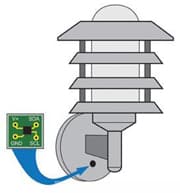Now, you might ask me: "What does the marathon have to do with LEDs? Do you really know what you are talking about?" I think so. Just as a strong player leads the marathon, LEDs are far ahead in the field of energy-efficient lighting. Compared to incandescent and fluorescent lighting, LEDs have the main technical advantage of lower energy consumption, longer life, and better control of lighting color and direction.
LED intelligence – how does LED, the key to winning the game, exert its great potential? There is no doubt that the first obstacle is the price. The current cost of LEDs is much higher than existing lighting solutions. Energy efficiency is often not enough to convince price-sensitive companies and consumers to buy more expensive products. Over time, large-scale production may lower prices, but can the cost be lowered enough and the price reduction rate meets user expectations? These are all uncertain factors and are open to question. Of course, these issues are beyond the scope of this article. If we just look for two hardware stores and try to find the same LED lights, this may be very difficult. Many retailers don't have enough varieties or quantities of stock just to attract consumers who are sparse. Why? This involves price and inventory turnover. So what does this mean for us engineers and innovators? How do we make LED lighting reach its potential? How to win this marathon?
If we give the LED "mind" to make it smart, put these eyes on the eyes, throat, counting and other functions. Designing valuable semiconductor materials in the field of lighting will optimize energy efficiency, extend lighting life, and reduce maintenance costs. This will help the LED run a complete schedule, stick to the end, and win the game with wisdom.
Key Elements of LED Intelligence Ambient light detection, communication and energy measurement are key elements of an intelligent lighting system. Ambient light detection allows the light to be dimmed when other sources have provided sufficient illumination; in addition, the color of the advanced RGB LED illumination system can be adjusted by detecting the color of the ambient light. The communication function allows remote control and connects small, large lighting units into a central network. Energy measurement accurately calculates the power consumed and provides system insight for predictive maintenance. All of these features—environmental light detection, communication, and energy measurement—will further save energy and reduce operating costs. This article explores key design considerations for adding ambient light detection, communications (including wireless and power lines), and energy measurement capabilities to LED lighting systems. A reference design example is provided.
An ambient light sensor (ALS) detects the amount of light in the vicinity of the sensor. These simple devices become the "eyes" of LED lighting systems and are also the key to energy savings. When the room has sufficient light source, the lighting is completely unnecessary, and the light can be dimmed or completely turned off, reducing power consumption and extending the life of the light. Key features of ALS include power consumption, lumen monitoring range, and IR and UV filtering. These sensors must be quietly in the system and do not consume excessive power, thus damaging the original intention of saving system energy. Good ALS current consumption is less than 1μA. The lumen detection range must reach the typical lumen range of the outdoor environment. 0.1lx to 100,000lx is generally sufficient for most applications. Considering system reliability, it may be necessary to adopt a slightly larger range. IR and UV filtering eliminates the spectrum of invisible light in real systems.
The ALS design in the light source shown in the Smart LED Light Detection function diagram. The sensor must avoid the light from the illuminator itself and avoid the effects of ambient light measurements. In this design, the ALS is on a separate board in the shadow of the light fixture. This simple design allows the ALS to turn off the light when it detects ambient light above a preset value. RGB sensors can even add more "features" to lighting applications. Similar to the LED lighting system with RGBLED and ALS shown in the figure, it can dynamically adjust its color output to meet specific application needs, such as stage scene lighting or department store display effects.

Figure: The ALS is mounted on a separate PCB in the shadow of the light fixture to prevent the sensor from reading the light intensity of the light itself.
- 100% breathable Cotton filled with hypo-allergenic, non-toxic glass beads.
- Even body pressure design.
- Prevent beads leakage design.
-
Oeko-Tex 100 certificate.
15 Lb Weighted Blanket,Cotton Weighted Blanket,Weighted Blanket Amazon,Weighted Blanket Queen,Blanquil Weighted Blanket,Anxiety Blanket
Hangzhou Dowin Hometextile Co.,Ltd. , https://www.dowinbedding.com